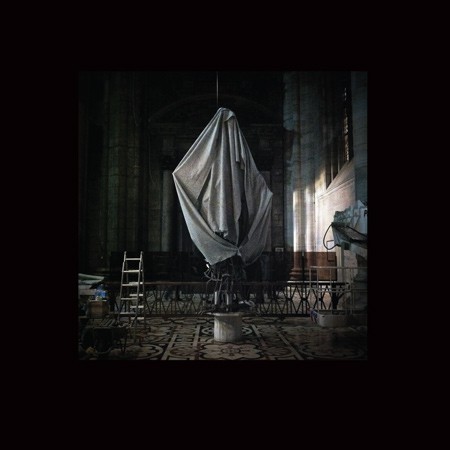![[ELECTRONIC/EXPERIMENTAL] Tim Hecker – ‘Virgins’ Album Review](https://thesightsandsounds.com/wp-content/uploads/2013/11/tim-hecker-virgins-e1384835622222.jpg)
[ELECTRONIC/EXPERIMENTAL] Tim Hecker – ‘Virgins’ Album Review
Upon hearing Tim Hecker’s Harmony in Ultraviolet for the first time in 2007, I described the experience to a friend as feeling like “some enormous deity descending through the clouds bringing thunderous redemptive white light.” Hecker’s music has always carried with it a feeling of the supernatural, perhaps invoking the devastating quietude that some feel when meditating on something beyond ourselves. Even for those who do not consider themselves spiritual, such as your humble narrator, Hecker’s music summons affective surges that don’t quite align well with a distanced, methodical-scientific worldview. There’s something ethereal to Hecker’s music – and to the genres that he simultaneously characterizes and propels – that appeals to the deepest core of our being, leading us on an an emotional voyage without promising to bring us back. In other words, to *think* about and rationalize Hecker’s music is to miss the point (although that won’t stop many people from doing it).
And that’s the biggest problem I have with the way music reviewers will no doubt approach Hecker’s latest album Virgins. They will likely seek intentionality that goes beyond mere context – “What was he trying to say? What caused him to create such disturbing music? Why did he choose a live orchestra for the first time in his career?” Just stop with that, please. Trying to link this album with the object of his representation is as pointless as trying to find the object of representation in a Rothko painting or in a Brancusi column. What Hecker wanted to say is much less important here than the world into which he pulls his audience. The better approach would be to understand that Virgins is an album that unfolds an emotional landscape individually for each listener.
That’s not to say Virgins can be accurately characterized as minimalist; in fact, this album is probably Hecker’s most “maximalist” to date. Layers upon layers of immersive instrumentation that summon unresolved tensions and fractured melodies, with pulsing drones and strict mixing reminding the listener that this is, in fact, first and foremost an electronic album. Even silence seems to scream to be noticed here. Its appeal will surely be much wider than is typical with albums that fall easily within the different tags we might apply to Virgins: electronic, drone/ambient, experimental, contemporary classical.
The album’s first track, “Prism”, is an unmistakable sign that this will be a significant break from previous Hecker sounds. The layers here don’t as much add celestiality as tension and storyline. They help give the track distinct sections, as the pulsing drones emerge and dissipate and the keys rise to prominence. The track ends in a Reich-esque phasing, the primary theme of the next track. “Virginal I” is probably the most complex and enjoyable track on the album. Its main theme is this phasing between piano tracks, reminding me quite a bit of Laraaji’s “The Dance #1”. After 2 minutes the pianos fall out for about a minute, during which time heavily-distorted chaos ekes its way in, eventually winning by minute 4. The previous melodies are far in the background with avant-jazz-inspired horns and woodwinds working to fill in the space left by the pianos. The main theme re-emerges to the forefront, this time softer than the way they entered the track. The piece ends with one measure of what becomes the backbone of later track “Black Refraction”.
Most of track 3, “Radiance”, is a drone at a relatively high pitch and in a clean resonance, evoking feelings of elated anticipation. It’s that feeling of a warm late-winter day when you know spring will soon arrive but bring with it unpredictable change. A perfectly timed bass note signals possible danger just in time for dynamic woodwind intervention and leftover synths to carry it into the next track. “Live Room” begins like a Steve Reich composition but quickly introduces a deeply unsettling crackling instrument distorted beyond recognition. The rough distortion eventually gives way to charming synth melodies, a transition something akin to a drive through a midwestern thunderstorm and the ethereal, almost supernatural clarity on the other side. “Live Room Out” extends that much-needed calm and could easily be written off as a segue, but a close listen raises a couple questions. What is the background chatter halfway through? Is that actually people talking? The last 10 seconds are nearly complete silence, which blends so seamlessly into the track that a casual listener might not even notice.
Pardon the repeated comparison, but “Virginal II” begins as another Reich-esque piece, with slightly phased pianos (wait – damn! – is it bells? a harp? all three?) succumbing to a growing synth and who-knows-what-else of a different timbre. At this point in the album you’ll probably fully realize that something about that overlap and tension between the multiple layers conveys a sense of immanent chaos, doom, or conflict. And it reflects a sense of distraught agony – it makes you want to resist it; it compels you toward a resolution without really offering one. Somehow the tensions subside without quite reaching resolution, a theme that continues through the end of the album. It doesn’t leave you feeling like *more* was needed in the track, just that this is, in fact, the human condition – that tensions often continue unabated or fizzle away without closure.
“Black Refraction” is the softest, arguably “prettiest” track on the album. Some abrasion is introduced by the sound of someone stroking the chords on the inside of a piano, which develops through the bulk of the song. That particular sound grows more prominent while simultaneously falling into a Basinski-style loop falling apart because we’ve found it and are listening to it. The provactively-named “Incense at Abu Ghraib” features resonant, distant woodwinds – maybe clarinets? Another layer comes in, masking and overtaking the first. Spiritual, mystic. As this song develops one begins to wonder about the relation between torture (the track’s title), virginal purity (the album’s name), and the possible link to the album’s cover (the white draped figure closely resembles imagery coming out of detainee abuse cases at Abu Ghraib prison). That all this may have roots in some sort of religious norms or conventions is an unavoidable muse if one notices on the album cover that the draped figure is positioned in the nave of a church, and is possibly a religious symbol (could it be a draped Virgin Mary?). You’re quickly snapped back to the album by a victorious, happy, peaceful breakthrough in “Amps, Drugs, Harmonium”. Hints of a beat are scattered throughout, but never quite resolving into a song-driving force. The focus of the song, strangely enough, seems to be the way the song ends: with a slight overhang of the piano, and then 8 seconds of silence. During the final 3 seconds it sounds as if the microphone sensitivity is increased, as the silence gets remarkably “louder”.
Hecker doesn’t linger in building “Stigmata I”, with the first second introducing a layer of sound that fights hard to stay in the track’s soundscape. But the track doesn’t seem to move forward or develop, giving the listener a sense of disorientation until the last couple seconds. “Stigmata II” begins with a buzzy and crackly-distorted piano track, ends on a mellow segue into “Stab Variation”. This final track perpetuates the album’s tensions to the final seconds, ending on similar complexity to the “loud” segments of the album. Percussion, drones, maybe even a triangle appear here, reminding the listener that they can hardly escape the confusion, nuance, challenge, and, well, utter beauty of life.
31









